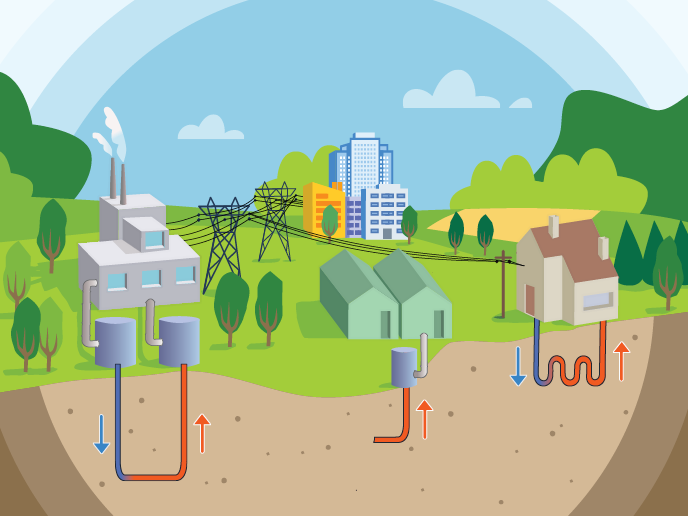Supporting the development of Europe’s geothermal energy sector
Radioactive decay generates continuous searing heat of more than 5 000 °C in the Earth’s core. Radiating outwards, the heat warms rocks, water and gas in the geomaterial that makes up our planet. The resulting geysers and hot springs are sources of geothermal energy, but most heat collects as pockets of dry heat that must be accessed by drilling and released as steam by injection of water. The European Green Deal targets a clean energy transition in which geothermal energy has the potential to play an important role. Geothermal energy is literally local and constantly available making it an excellent contributor to the renewable energy mix.
Support for Europe’s research initiatives to tap the heat beneath our feet
Geothermal is a viable renewable energy source for both heating and baseload electricity. In May 2022, the European Commission presented the REPowerEU Plan, a roadmap for mitigating energy market disruption in Europe by reducing the dependence on imports of fossil fuels. With the RePowerEU plan, new initiatives and measures to support a faster green transition are being taken. Geothermal energy will play an important role in this endeavour, as this renewable energy is expected to become integrated more widely in modernised district and communal heating systems. This will further drive innovation of the necessary equipment and processes, which require access to finance to demonstrate these developments in the field.
Ten earth-shaking projects
The 10 projects in this Results Pack demonstrate the European Commission’s continued support for research and innovation to expand the geothermal sector. These projects present an overview of the different areas of project development and solutions for a wider deployment of geothermal heating and power generation. The operational efficiency of geothermal power plants is determined by the physical and chemical properties of geological fluids. The REFLECT project is studying these, and the GEOPRO project is amassing new data about geological fluid properties. Environmental concerns for deploying geothermal energy in Europe are being tackled using a toolkit for life cycle impact assessment that highlights projects' benefits, developed by GEOENVI. In the same vein, GEORISK’s blueprint will allow geothermal risk mitigation schemes to be established all over Europe in an approach tailored to national or EU level. Aiming to reduce greenhouse gas emissions, the GECO project is developing a holistic solution for emission gas management in geothermal power plants. Drilling is often the most capital-intensive part of development, and innovations in drilling systems developed by Geo-Drill promise to decrease drilling costs. The space for the development of a drilling site is also an issue in many cities, particularly for Europe’s historic buildings. The GEO4CIVHIC project has tailored geothermal solutions enabling operation in an urban environment. Where geothermal sites already exist, MEET is maximising the use of installations and prospecting for resources in geological structures that are currently underexploited. Collaboration is the key action of GEOTHERMICA, accelerating geothermal energy deployment whereby transnational projects receive both national funding topped up with Horizon 2020 financial support. Projects promote innovation, cooperation and synergy. The SU-DG-IWG project is coordinating European research efforts to accelerate geothermal uptake.



